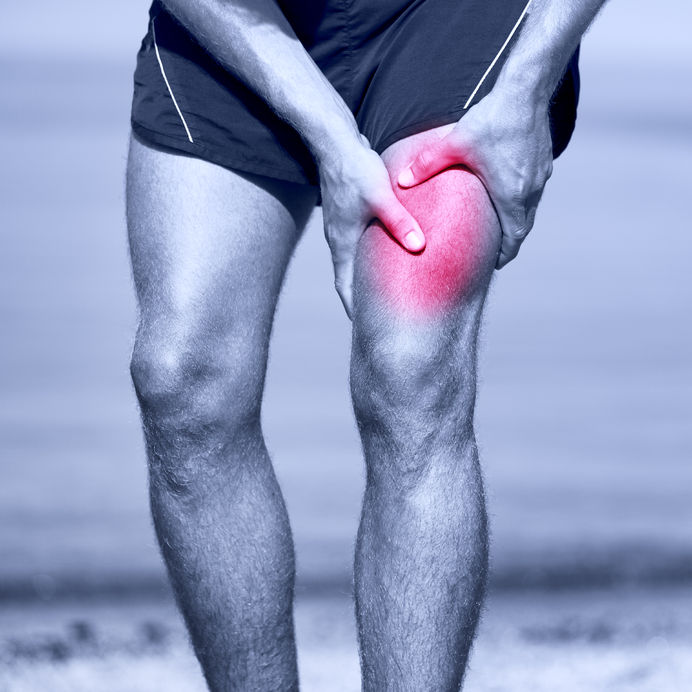QUADRICEPS CONTUSION: ‘CORKS’

Copyright: maridav / 123RF Stock Photo
Corks result from a strong blow to the leg where a deep bruise occurs to the muscle tissue in the quadriceps. It can happen in other body areas, however most often in the thigh. These injuries commonly occur in contact sports like League, and kick-boxing, put also, surprisingly, in Basketball. If you have suffered a cork you might find that there is swelling and tenderness over the affected area. It might be painful to contract the muscle at the time, or the pain might develop over the following few hours. Symptoms might take 24 hours to develop, becoming really apparent once the effect of the exercise wears off and the muscle cools down. You may get some bruising at the site, depending on the depth and severity of the cork.
There are three gradings of quad corks: Mild, Moderate and Severe, depending on how much knee flexion occurred at the time of the injury. If you can still flex your knee more than 90 degrees then the cork would fall into the mild category. For a moderate grade you would be able to flex your knee between 45-90 degrees. If you have a severe cork, you would have less than 45 degrees of flexion on your knee. The more severe the cork, the longer the recovery time will be, but generally most corks should resolve within a month.
Corks can lead to two serious complications: Compartment syndrome and Myositis Ossificans. Compartment syndrome may result in tightness, swelling or bruising; you may also feel pins and needles, numbness or sharp sensations in the affected limb. If you think that you may have compartment syndrome you should go directly to the hospital for assessment. Failure to seek medical advice may result in serious muscle damage. Myositis Ossificans is the formation of bone deposits within the muscle tissue – essentially bone building where it ought not to be. This may take some time to become apparent. If your pain is not resolving and is actually getting worse over time then this may be occurring. If you suspect this, mention it to your physio or make an appointment with your GP.
What should you do if you think you have sustained a corked quad? Your first port of call should be ice. Apply ice to the area for 20 mins every two hours, making sure that the ice is not in direct contact with the skin. We use a damp towel to wrap ice in the clinic. You should continue this routine for 24-48 hours. You should definitely avoid heat, running and massage during this time frame. Monitor closely due to the risks of developing complications as described above.
You should seek physiotherapy as soon as possible to assist with the healing phase. Your physio will help with soft tissue release when it is safe, and also help with strengthening so you can return to your pre-injury level. If you have excess swelling and pain with an inability to bear weight on the affected leg then you should consult your GP as soon as possible.
By Emily Ogden (Physiotherapist) & Michael Gilbert (Senior Physiotherapist/Senior Exercise Physiologist)
FOR MORE INFORMATION:

